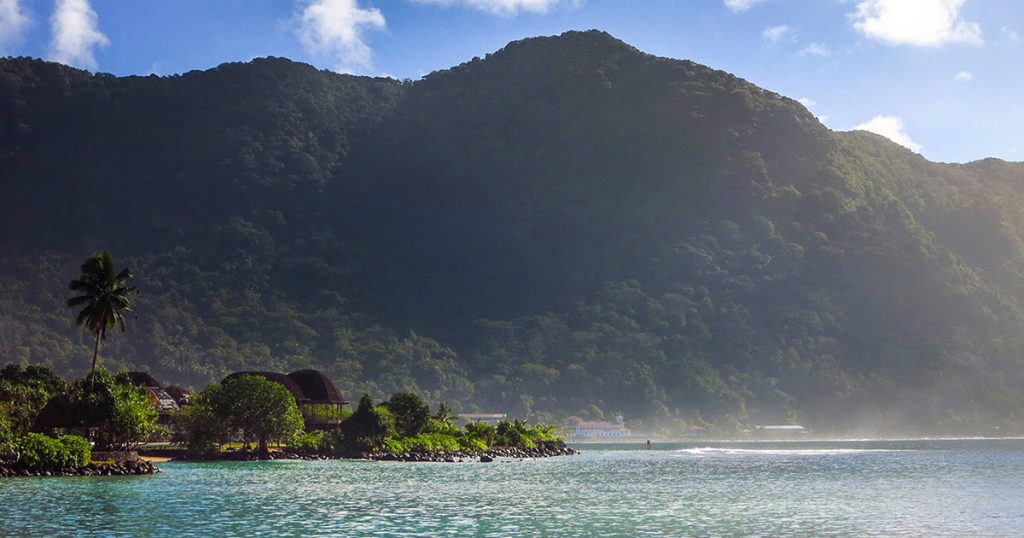The Pacific region is usually the most dynamic geographic region for new submarine fiber optic cable projects. The fast-growing economies of East Asia and the vast distances of the Pacific combine to create a need for large-scale cable systems. The activity level for new projects, in terms of route-kilometers of cable, consistently puts the region at or near the top of the market in any given year.
While it is easy to understand the demand for cables spanning the Pacific and large regional systems linking the economic centers of East Asia, another market for submarine cables in the region can sometimes get overlooked—cables connecting small South and Central Pacific islands.
Although lacking the glamour of the vast distances traversed, the huge populations served, and the tremendous economic impact of transpacific cables, the Pacific island cables still represent a significant investment in submarine systems that few were predicting, even as recent as just a couple years ago. We have described the factors that are driving new cable deployment in this region in previous articles, but the level of activity still surprises many, considering the small size of the markets and the high costs of new cable systems.
With the South and Central Pacific turning into a dynamic market, it is worth revisiting the region as we move towards the middle 2017. The amount of activity in 2017 to date is striking.
- February: Digicel Tonga Limited acquired part ownership in Tonga Cable Limited (TCL), which owns Tonga’s only international cable system, linking Tonga with Fiji
- March: The Manatua Cable System was announced, connecting French Polynesia, Samoa, Niue and Rarotonga and Aitutaki in the Cook Islands
- April:
- Agreement made for new cables linking Tokelau and Tuvalu to Samoa, and interconnecting with Tui Samoa, for ongoing connectivity to Fiji
- ATISA (Guam-Saipan-Tinian-Rota) gets final regulatory approval
- May:
- Cable laying for the ATISA begins
- Supply contract signed with NEC for new connections to Palau, Yap and Chuuk islands. Palau and Yap will be off-branches of the transpacific SEA-US cable already under construction, while the branch to Chuuk will be an extension of the existing HANTRU-1 cable
- The Hawaiki cable, which will include a landing in American Samoa and the capability of serving other Pacific islands, is well underway with more than 90% of the cable having been manufactured by the middle of May
- Four Pacific island carriers have signed interest in the Southern Cross NEXT cable, which is proceeding with its marine survey
- June:
- Kosrae (FSM) and Tarawa (Kiribati) will be connected by submarine cables with funding from World Bank
- The Asian Development Bank said it is working on financing to support a cable to Nauru
For many of these islands (Niue, Rarotonga, Aitutaki, Tokelau, Tuvalu, Palau, Yap, and Chuuk), these projects represent the first time they will be connected to the global submarine fiber optic network. Others, like Saipan, Tinian, and Rota, will be getting their second cable connection, which will provide greater security and resiliency in international internet traffic, and prevent a repeat of the 2015 outage in which the only cable system serving those islands left them without internet services.
Besides bringing some new islands online and providing greater security for others, we also are seeing the emergence of “hub” islands. Hubs are the logical extension to the development of submarine cable systems in any region. Guam and Hawaii have been hubs for some time, as they are the landing points of many transpacific submarine cables linking Asia and Australia to the Continental United States. Fiji, as a landing point for the important Southern Cross cable, also has established itself as a hub. But now we are seeing a growing number of hubs as the reach of the cable network extends throughout the South and Central Pacific. Islands like Samoa and Tahiti are emerging as hubs, reaching out to islands too small and remote to reach the traditional hubs affordably.
With the level of new construction and other activity in the region, it is clear that submarine fiber optic cable systems are on the upswing in the Pacific Islands. Whether as standalone systems, connections to larger projects, or second cables for diversity, this is a vibrant market and one that should remain so for the foreseeable future.
Click here to receive special news and announcements from Ocean Specialists directly to your inbox.
